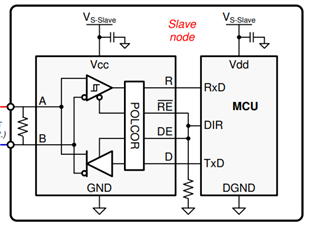Hi team,
If my customer is using this part as a slave only, not as a master, how does he need to connect the RE_ and DE pins? Do they need to be controlled by the DSP or can they be terminated with a resistor?
Is there a sample circuit that can be drawn up for this?
Thanks,
Lauren



